Model-based evaluation of rainfed lowland rice responses to N fertiliser in variable hydro-edaphic wetlands of East Africa
This page lists all metadata that was entered for this dataset. Only registered users of the TRR228DB may download this file.
Feature
 Request download
Request download
Citation
Citation Options
Identification
| Title: | Main Title: Model-based evaluation of rainfed lowland rice responses to N fertiliser in variable hydro-edaphic wetlands of East Africa |
| Description: | Abstract: In East Africa, rainfed lowland rice is primarily produced by smallholders in alluvial floodplain and inland valley wetlands. These wetlands differ in their dominant soil types and water regimes that vary seasonally, inter-annually and between field positions. Yield responses to mineral nitrogen (N) fertiliser thus likely vary between and within wetlands and years, modulating the profitability of N fertiliser use. Therefore, the locally-validated APSIM model was used to study yield responses to N fertiliser rates (0, 30, 60, 90, 120, and 150 kg ha-1) and supplemental irrigation at different field positions in a floodplain in Tanzania (fringe and middle positions) and an inland valley in Uganda (valley-fringe, mid-valley and valley-bottom positions) over 30-years. Average rainfed yield gains with mineral N and N use efficiencies were high, ranging between 1.7 and 4.5 Mg ha-1 and 27–70 kg kg-1 in the floodplain and between 1.0 and 3.2 Mg ha-1 and 18–34 kg kg-1 in the inland valley, depending on field position, N rate and year. Consequently, N fertiliser use was generally profitable in both wetlands, with value/cost ratios ≥ 4 and marginal rates of returns > 150%. Profitable N rates in all years were 30–120 kg ha-1 in the fringe and 30–90 kg ha-1 in the middle positions of the floodplain, and 60–150 kg ha-1 in the mid-valley and 90–150 kg ha-1 in the valley-bottom positions of the inland valley. In the valley-fringe position, N fertiliser use was comparatively riskier and profitable only in 77–90% of years at N rates of 60–150 kg ha-1. Supplemental irrigation may help boost N fertiliser use efficiencies and use profitability with average yield gains of > 1.5 and > 0.4 Mg ha-1 in the floodplain and inland valley, respectively, while simulated spatial-temporal water stress pattern may help guide efficient irrigation scheduling. |
| Identifier: | 10.1016/j.fcr.2022.108602 (DOI) |
Responsible Party
| Creators: | Kristina Grotelüschen (Author), Donald S. Gaydon (Author), Kalimuthu Senthilkumar (Author), Matthias Langensiepen (Author), Mathias Becker (Author) |
| Funding Reference: | Deutsche Forschungsgemeinschaft (DFG): CRC/TRR 228: Future Rural Africa: Future-making and social-ecological transformation |
| Publisher: | Elsevier |
| Publication Year: | 2022 |
Topic
| TRR228 Topic: | Agriculture |
| Related Subproject: | A3 |
| Subjects: | Keywords: Agriculture, Rice |
| Geogr. Information Topic: | Farming |
File Details
| Filename: | GrotelueschenRicePaper2.pdf |
| Data Type: | Text - Publication |
| File Size: | 2.3 MB |
| Dates: | Accepted: 09.06.2022 Available: 18.06.2022 |
| Mime Type: | application/pdf |
| Data Format: | |
| Language: | English |
| Status: | Completed |
Constraints
| Download Permission: | Only Project Members |
| General Access and Use Conditions: | According to the TRR228DB data policy agreement. |
| Access Limitations: | According to the TRR228DB data policy agreement. |
| Licence: | [TRR228DB] Data policy agreement |
Geographic
Specific Information - Publication
| Publication Status: | Published |
| Review Status: | Peer reviewed |
| Publication Type: | Article |
| Article Type: | Journal |
| Source: | Field Crops Research |
| Issue: | 108602 |
| Volume: | 285 |
| Number of Pages: | 14 (1 - 14) |
Metadata Details
| Metadata Creator: | Matthias Langensiepen |
| Metadata Created: | 18.04.2023 |
| Metadata Last Updated: | 18.04.2023 |
| Subproject: | A3 |
| Funding Phase: | 1 |
| Metadata Language: | English |
| Metadata Version: | V50 |
Metadata Export
| Metadata Schema: |
Dataset Statistics
| Page Visits: | 66 |
| Metadata Downloads: | 0 |
| Dataset Downloads: | 0 |
Dataset Activity
Feature
 Download
DownloadBy downloading this dataset you accept the license terms of [TRR228DB] Data policy agreement and TRR228DB Data Protection Statement
Adequate reference when this dataset will be discussed or used in any publication or presentation is mandatory. In this case please contact the dataset creator.
Adequate reference when this dataset will be discussed or used in any publication or presentation is mandatory. In this case please contact the dataset creator.





